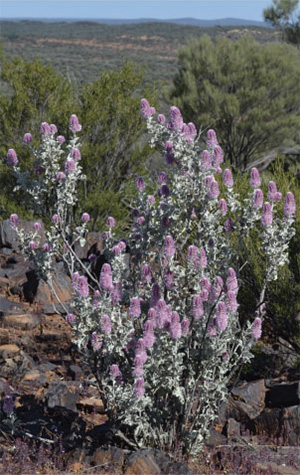A new paper on the evolution of the genus Ptilotus in arid Australia was published by Tim Hammer, who is currently working as a post-doc at the State Herbarium of South Australia and The University of Adelaide with Chief Botanist, Prof. Michelle Waycott.
T.A. Hammer, M.Renton, L. Mucina & K.R. Thiele. Arid Australia as a source of plant diversity: the origin and climatic evolution of Ptilotus (Amaranthaceae). Australian Systematic Botany 34: 570-586.
The authors tested the chronological and geographic origins of the mostly arid Australian genus Ptilotus (Amaranthaceae) and its close relatives (i.e. the ‘aervoids’) by reconstructing a dated phylogeny with near comprehensive sampling for Ptilotus and estimating ancestral geographic ranges. Their analyses support the hypothesis that a pre-adaptation to aridity and early arrival in an aridifying Australia were integral to the success of Ptilotus, and that the Eremaean zone has been a source of biodiversity in the genus and for independent radiations into neighbouring climatic zones.
Tim now works on Hibbertia (Dilleniaceae), one of the most species-rich genera in Australia, in collaboration with State Herbarium Honorary Research Associate Hellmut Toelken and colleagues from South Australia and interstate.

